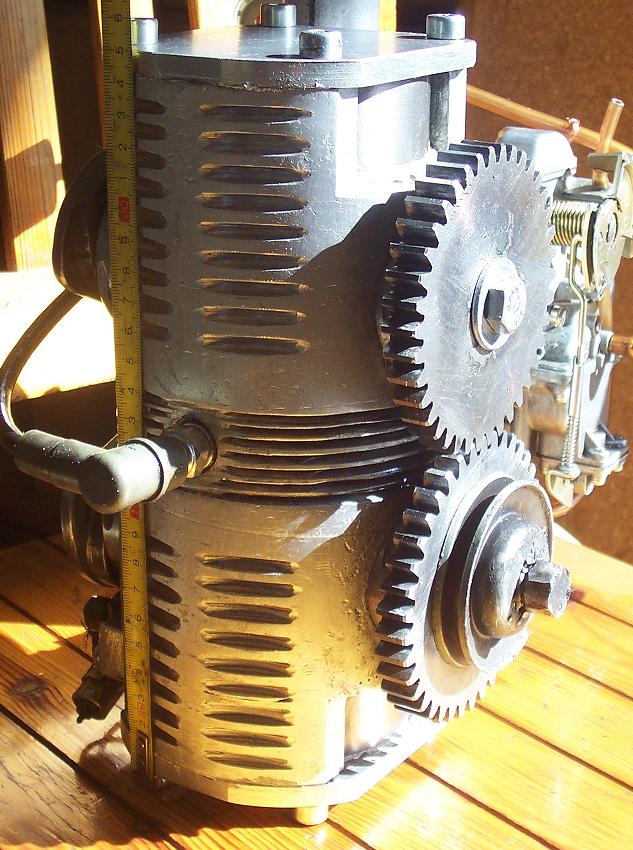Hello Henry.
For a flying machine (helicopter, airplane etc) the Power-to-Weight ratio of the engine is significant.
The weight comprises the engine weight and the weight of the required fuel at take off.
A Wankel Rotary engine appears lightweight, but if the fuel weight is taken into account it is not.
For a Portable Flyer the Power-to-Weight ratio of the engine(s) is crucial / vital.
With short stroke (30mm per piston for a “combined” stroke of 60mm, in the first OPRE Tilting prototype) when the engine is running at 12,000rpm the mean piston speed is only 12m/sec, and when the engine is running at 9,000 rpm the mean piston speed is only 9m/sec (i.e. as fast as the mean piston steep – at continues operation - of some giant two-stroke Marine Diesels, those with the Top Thermal Efficiency among all engines).
Rid of reed valves and of rotary valves (weight, size, reliability issues),
with the thrust loads taken at the cold side of the piston skirt, away from the combustion,
with compact combustion chamber and a lot of squeeze,
with additional time for efficient combustion (pulling connecting rod arrangement),
with perfect balancing (true vibration-free operation) allowing the simple mounting on a extremely lightweight frame secured on the shoulders of the rider / pilot (who cannot tolerate vibrations),
without the need of a tuned / heavy exhaust,
it fits better with a true “portable” Flyer.
The gyroscopic rigidity is another "big" issue addressed by the architecture of this Portable Flyer, enabling easy, instant and accurate control over the flight.
The first prototype we made:

has:
333 cc, bore 84mm, stroke 30+30=60mm
(same bore to stroke ratio with BMW's boxer R1200GS of 2013)
weight: 8.5Kp (19lb) without the exhaust pipe and the carburetor
height: 250mm
As a proof-of-concept low-budget prototype it has a lot of unnecessary material (weight) on it.
Each of the two high-revving OPRE-Tilting engines of the Portable Flyer will have (together with its transmission, i.e. the sprockets and the belts, and the rotors/propellers it drives) a weight of about 6Kp.
The two fuel tanks are to be located / secured on the legs, just above the ankles of the pilot / rider.
“And what about when the fuel tanks are almost empty” I hear you asking.
Besides the wingsuit and the body of the pilot / rider, aerodynamic lift is also provided by the propellers. If they “look” slightly upwards, the component of the thrust force upwards completes the equation.
Thanks
Manolis Pattakos




